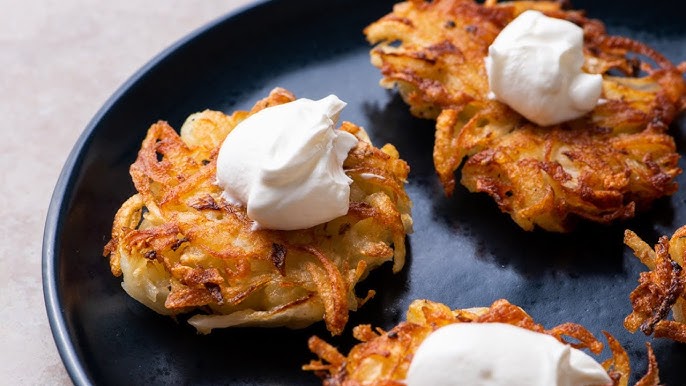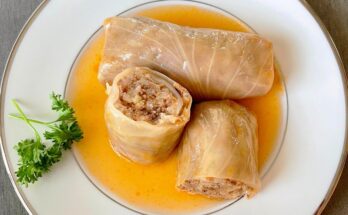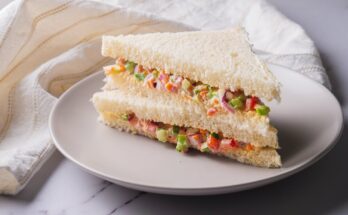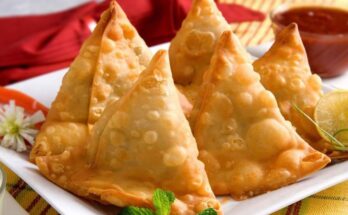Latke Recipe: Latkes are crispy, golden-brown potato pancakes that are a staple of Jewish cuisine, particularly during Hanukkah. Made from grated potatoes mixed with simple ingredients like eggs and flour, latkes are shallow-fried to perfection, resulting in a crunchy exterior and tender interior. They are beloved for their comforting taste and versatility.
History and Cultural Significance
The origin of latkes is deeply rooted in Jewish traditions. They are commonly associated with the Hanukkah story, where oil miraculously lasted for eight days. The act of frying latkes in oil commemorates this miracle. Over time, latkes have evolved to include various regional flavors and styles, but the essence of tradition remains at their heart.
Ingredients Needed for Perfect Latkes
Basic Ingredients
To make traditional latkes, you’ll need:
- 4 large potatoes (Russet or Yukon Gold are ideal)
- 1 medium onion
- 2 large eggs
- 1/4 cup all-purpose flour (or a gluten-free substitute)
- Salt and pepper to taste
- Vegetable oil for frying
Optional Add-Ons for Flavor
For a twist on the classic, consider adding:
- Chopped herbs (parsley, dill, or chives)
- Garlic powder or onion powder
- Shredded carrots or zucchini for added texture and nutrition
- Cheese, like Parmesan or feta, for a richer taste
Tools Required for Making Latkes
Essential Kitchen Tools
- A box grater or food processor with a grating attachment
- A large mixing bowl
- Measuring cups and spoons
- A frying pan (cast iron or non-stick works best)
- A slotted spatula
Handy Extras for Efficiency
- A clean kitchen towel or cheesecloth for draining
- A thermometer to monitor oil temperature
- A food processor for quicker grating
Preparing the Potatoes
Choosing the Right Potatoes
The choice of potatoes makes all the difference. Starchy potatoes, like Russet, are preferred because they hold together better and yield crispier results. Avoid waxy potatoes as they tend to be too moist and don’t fry well.
Grating and Draining Tips
Grate the potatoes and onions finely using a box grater or food processor. Once grated, wrap the mixture in a clean kitchen towel and squeeze out as much liquid as possible. Removing excess moisture is crucial for achieving crispy latkes. Reserve the drained liquid briefly to allow the starch to settle at the bottom, then add it back to the mixture for better binding.
Mixing the Latke Batter
Combining Ingredients for the Perfect Consistency
In a large bowl, combine the grated potatoes and onions with eggs, flour, salt, and pepper. Mix well until the batter is evenly coated but not too runny. The consistency should be thick enough to hold its shape when scooped.
Common Mistakes to Avoid
- Don’t skip draining; excess water will cause soggy latkes.
- Avoid overmixing, as this can make the batter gummy.
- Use the right ratio of egg to flour to ensure proper binding without being too heavy.
Shaping the Latkes
Techniques for Shaping Even Patties
To achieve perfectly shaped latkes, use a large spoon or an ice cream scoop to portion the batter evenly. Drop a scoop into your hands and gently flatten it into a round patty, about 1/4 to 1/2 inch thick. Uniform sizes help the latkes cook evenly and create a consistent presentation.
How Size Affects Cooking
The size of your latkes can impact their texture and cooking time:
- Smaller Latkes: Cook faster and tend to be crispier.
- Larger Latkes: Have a softer center and require more attention to avoid overcooking the exterior. Adjust the size based on your preferences, keeping in mind that smaller patties are easier to flip and handle.
Frying the Latkes
Choosing the Right Oil
For crispy and golden latkes, select an oil with a high smoke point, such as vegetable, canola, or sunflower oil. These oils handle high heat well and won’t impart a strong flavor to the latkes.
Frying Tips for Crispy and Golden Latkes
- Heat the oil in a frying pan over medium-high heat. It should shimmer but not smoke.
- Test the oil by dropping a small bit of batter into it. If it sizzles immediately, the oil is ready.
- Fry latkes in batches, avoiding overcrowding the pan to ensure even cooking.
- Cook each side for 3-4 minutes until golden brown.
- Use a slotted spatula to flip the latkes carefully.
Draining and Serving the Latkes
Why Draining is Essential
Once fried, transfer the latkes to a plate lined with paper towels. Draining removes excess oil, keeping the latkes light and crispy instead of greasy. If making a large batch, keep the finished latkes warm in an oven set to low heat while you finish frying the rest.
Creative Serving Ideas
While classic latkes are traditionally served with applesauce or sour cream, you can get creative:
- Top with smoked salmon and cream cheese for an elevated appetizer.
- Add a dollop of guacamole or spicy salsa for a modern twist.
- Pair with sautéed mushrooms and herbs for a savory touch.
Popular Toppings for Latkes
Classic Toppings: Applesauce and Sour Cream
Applesauce adds a sweet contrast to the savory latkes, while sour cream provides a creamy and tangy balance. These timeless pairings complement the crispy texture of latkes and are a must-have for any traditional serving.
Modern Twists for Extra Flavor
Experiment with gourmet toppings such as:
- Greek yogurt with fresh dill
- Spiced chutneys or jams
- Crumbled goat cheese or feta with a drizzle of honey
- Sriracha mayo or aioli for a spicy kick
Storing and Reheating Latkes
Storing Latkes Properly
If you have leftovers (or want to prepare in advance), store latkes in an airtight container. Place parchment paper between layers to prevent sticking. They can be refrigerated for up to 3 days or frozen for up to 3 months.
Reheating for Crispy Results
To reheat, avoid the microwave, as it makes latkes soggy. Instead:
- Use an oven at 375°F (190°C) for 10-15 minutes to restore crispiness.
- Alternatively, reheat them in a skillet over medium heat for a few minutes per side.
Variations of Traditional Latkes
Gluten-Free Latkes
Replace the flour with gluten-free alternatives like almond flour, rice flour, or potato starch. These substitutions ensure the latkes remain crispy and delicious for those with dietary restrictions.
Vegan Latkes
Omit the eggs and use a flaxseed or chia seed mixture as a binder. For every egg, combine 1 tablespoon of ground seeds with 2.5 tablespoons of water, letting it sit until it forms a gel-like consistency.
Tips for Hosting a Latke Party
Preparing in Advance
Host a stress-free latke party by prepping ingredients ahead of time:
- Grate and drain the potatoes the day before, storing them in water with a splash of lemon juice to prevent browning.
- Fry the latkes in advance and reheat them in the oven just before serving.
Serving Suggestions for a Crowd
- Offer a topping bar with classic and modern options.
- Serve latkes alongside a variety of dishes like salads, soups, or roasted vegetables for a complete meal.
- Consider mini-latkes as a bite-sized appetizer option.
Common Mistakes and Troubleshooting
Why Latkes Fall Apart
Latkes may fall apart if:
- The batter is too wet. Make sure to drain the potatoes thoroughly.
- The oil isn’t hot enough, causing the latkes to absorb excess oil rather than crisping up.
How to Fix Soggy Latkes
- Increase the heat of the oil slightly.
- Avoid stacking freshly fried latkes on top of each other, as steam can make them soggy.
Healthier Alternatives to Traditional Latkes
Baking vs. Frying
For a lighter option, bake latkes in a preheated oven at 400°F (200°C). Line a baking sheet with parchment paper, brush lightly with oil, and bake for 15-20 minutes, flipping halfway through.
Using Sweet Potatoes or Vegetables
Swap potatoes for sweet potatoes, zucchini, or carrots for a nutrient-packed variation. These alternatives add natural sweetness and vibrant colors to your plate.
FAQs about Latke Recipe
What are latkes?
Latkes are traditional Jewish potato pancakes that are a staple during Hanukkah. They are made from grated potatoes mixed with onion, eggs, and flour or matzo meal, then fried to golden perfection in oil.
What ingredients do I need to make latkes?
The basic ingredients for latkes are potatoes, onions, eggs, flour (or matzo meal for a gluten-free option), salt, and oil for frying. Some variations might include garlic, herbs, or spices to enhance the flavor.
How do I prevent my latkes from getting soggy?
To keep latkes crispy and prevent sogginess, squeeze out as much liquid as possible from the grated potatoes and onions before mixing them with the other ingredients. Using a cheesecloth or a fine strainer works well. Also, ensure the oil is hot enough before frying each batch.
Can latkes be made ahead of time?
Yes, latkes can be prepared ahead of time and reheated. To reheat, place them on a baking sheet in a single layer and warm them in a 350°F (175°C) oven until they are crispy again.
Are there any tips for the best frying results?
For the crispiest latkes, use a heavy skillet and maintain a medium-high heat to keep the oil consistently hot. The oil should sizzle when a piece of potato is dropped in. Be careful not to overcrowd the pan, as this can lower the oil temperature and lead to soggy latkes.
What are the best potatoes for latkes?
Starchy potatoes like Russets or Idaho potatoes are ideal for latkes because they have a high starch content, which helps in creating a crispy texture. Avoid waxy potatoes, which can lead to denser and moister latkes.
What can I serve with latkes?
Latkes are traditionally served with sour cream or applesauce. They can also be paired with smoked salmon, caviar, or a dollop of crème fraîche for a more luxurious twist.
Conclusion
Latkes are more than just potato pancakes—they’re a celebration of tradition, taste, and togetherness. Whether you stick to the classic recipe or experiment with modern twists, the joy of making and sharing latkes is timeless.
Don’t be afraid to get creative with your latke recipe. Add your favorite spices, try different toppings, or explore healthier alternatives. After all, cooking is about making traditions your own.



